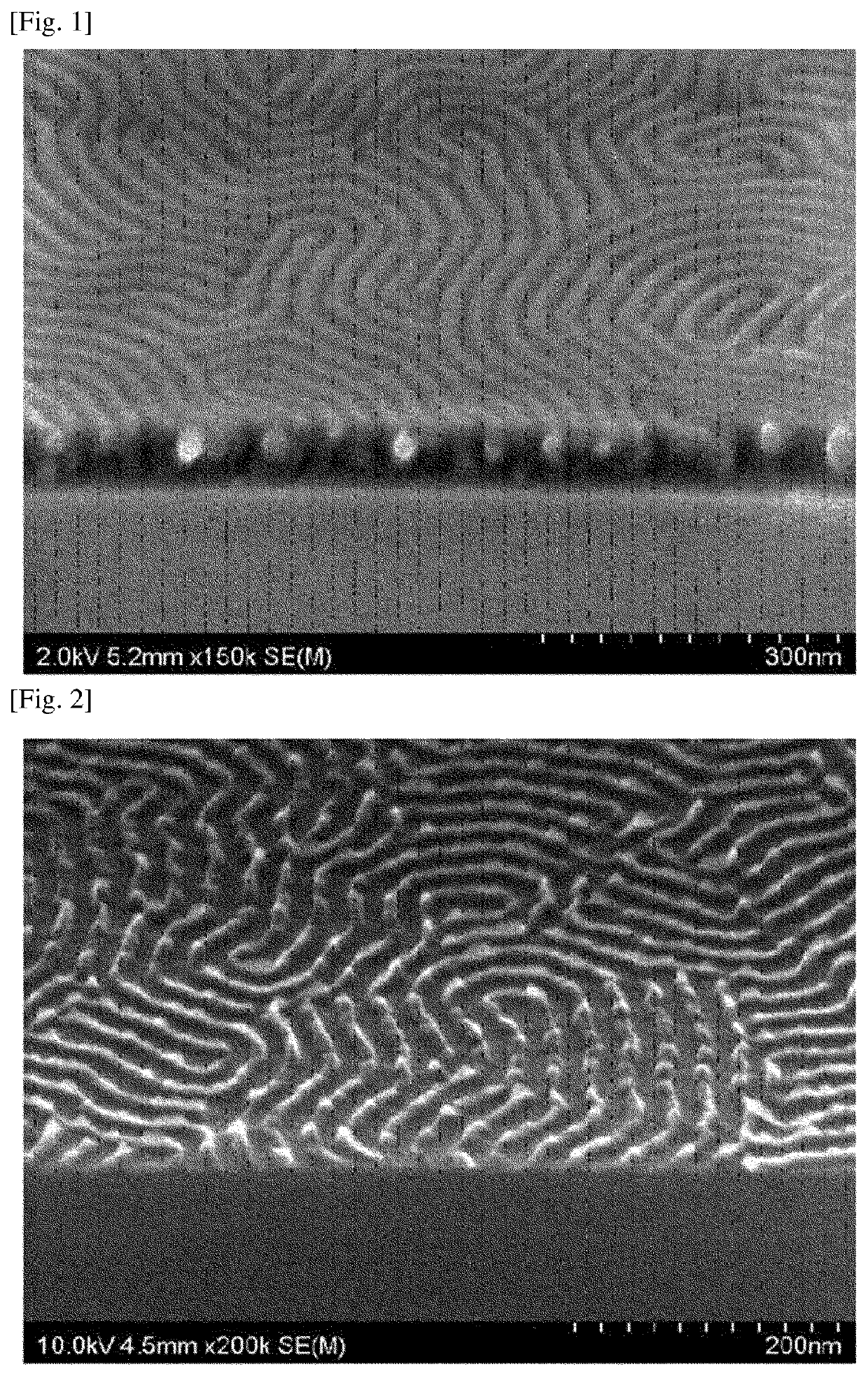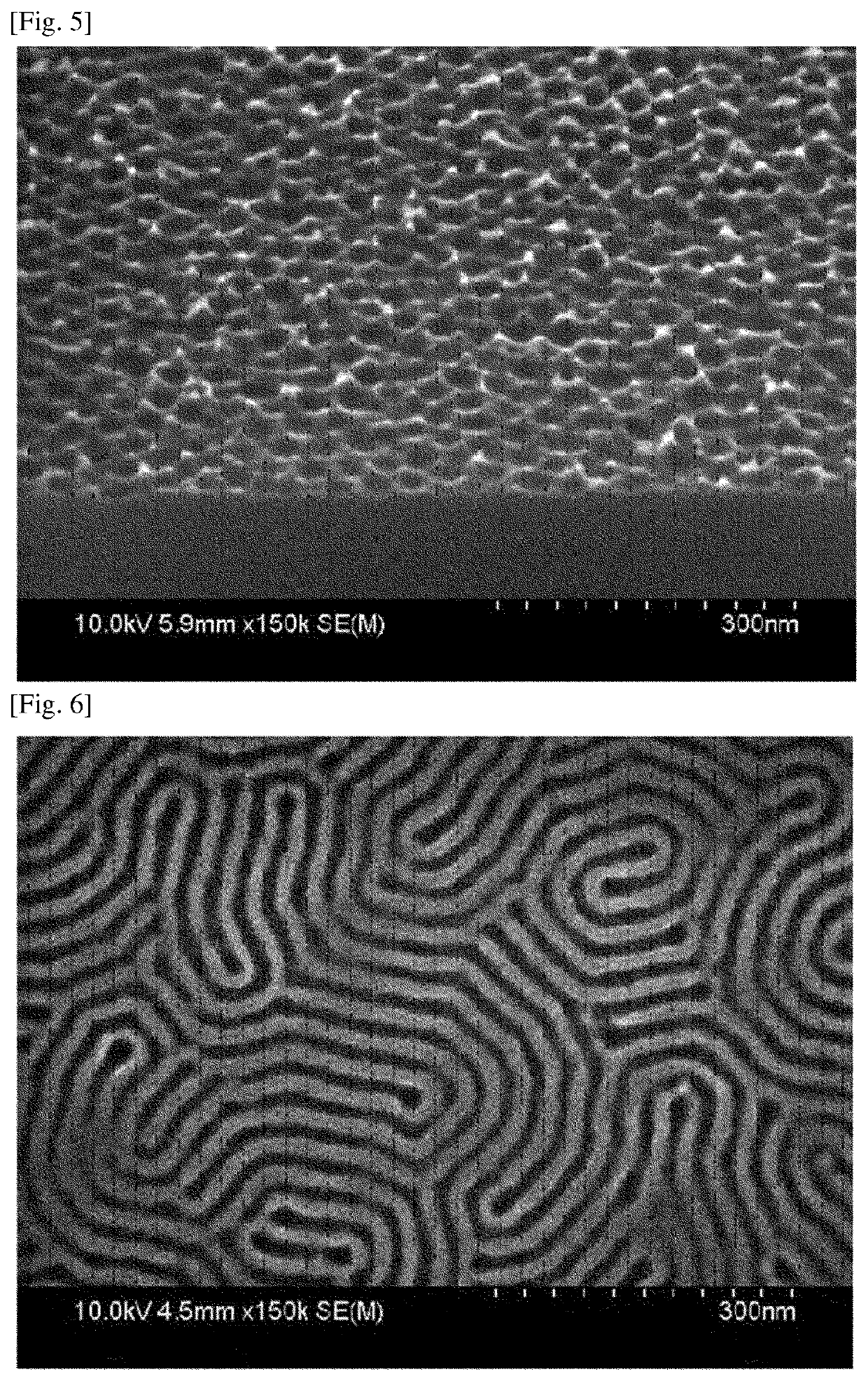Preparation Method of Patterned Substrate
- Summary
- Abstract
- Description
- Claims
- Application Information
AI Technical Summary
Benefits of technology
Problems solved by technology
Method used
Image
Examples
preparation example 1
Synthesis of Monomer (A)
[0124]The compound (DPM-C12) of Formula A below was synthesized in the following manner. Hydroquinone (10.0 g, 94.2 mmol) and 1-bromododecane (23.5 g, 94.2 mmol) were placed in a 250 mL flask, dissolved in 100 mL of acetonitrile, and then an excess amount of potassium carbonate was added thereto and reacted at 75° C. for about 48 hours under a nitrogen condition. After the reaction, the remaining potassium carbonate was filtered off and the acetonitrile used in the reaction was also removed. A mixed solvent of DCM (dichloromethane) and water was added thereto to work up the mixture, and the separated organic layers were collected and passed through MgSO 4 to be dehydrated. Subsequently, the target product (4-dodecyloxyphenol) (9.8 g, 35.2 mmol) in a white solid phase was obtained in a yield of about 37% using dichloromethane in column chromatography.
[0125]The synthesized 4-docecyloxyphenol (9.8 g, 35.2 mmol), methacrylic acid (6.0 g, 69.7 mmol), DCC (dicycloh...
preparation example 2
Synthesis of Random Copolymer (B)
[0129]0.5340 g of the compound (DPM-C12) of Preparation Example 1, 1.1367 g of pentafluorostyrene, 30.0 mg of an RAFT (reversible addition-fragmentation chain transfer) agent (2-hydroxyethyl 2-((dodecylthio)carbonothioyl)thio)-2-methylpropanoate), 5.1 mg of AIBN (azobisisobutyronitrile) and 1.67 mL of anisole were placed in a 10 mL flask (Schlenk flask), stirred at room temperature for 30 minutes under a nitrogen atmosphere, and then an RAFT (reversible addition-fragmentation chain transfer) was performed at 70° C. for 12 hours. After the polymerization, the reaction solution was precipitated in 250 mL of methanol as an extraction solvent, and then dried after filtering under reduced pressure to prepare a random copolymer. The number average molecular weight (Mn) and the molecular weight distribution (Mw / Mn) of the random copolymer were 12,300 and 1.17, respectively.
preparation example 3
Synthesis of block copolymer (A-1)
[0130]2.0 g of the monomer (A) of Preparation Example 1, 64 mg of cyanoisoproyl dithiobenzoate as an RAFT (reversible addition-fragmentation chain transfer) reagent, 23 mg of AIBN (azobisisobutyronitrile) as a radical initiator and 5.34 mL of benzene were placed in a 10 mL Schlenk flask and stirred at room temperature for 30 minutes under a nitrogen atmosphere, and then an RAFT (reversible addition-fragmentation chain transfer) polymerization reaction was performed at 70° C. for 4 hours. After the polymerization, the reaction solution was precipitated in 250 mL of methanol as an extraction solvent, and then filtered under reduced pressure and dried to prepare a pink macro initiator. The yield of the macro initiator was about 82.6 wt % and the number average molecular weight (Mn) and molecular weight distribution (Mw / Mn) were 9,000 and 1.16, respectively. 0.3 g of the macro initiator, 2.7174 g of a pentafluorostyrene monomer and 1.306 mL of benzene w...
PUM
| Property | Measurement | Unit |
|---|---|---|
| Power | aaaaa | aaaaa |
| Power | aaaaa | aaaaa |
| Flow rate | aaaaa | aaaaa |
Abstract
Description
Claims
Application Information
 Login to View More
Login to View More - R&D
- Intellectual Property
- Life Sciences
- Materials
- Tech Scout
- Unparalleled Data Quality
- Higher Quality Content
- 60% Fewer Hallucinations
Browse by: Latest US Patents, China's latest patents, Technical Efficacy Thesaurus, Application Domain, Technology Topic, Popular Technical Reports.
© 2025 PatSnap. All rights reserved.Legal|Privacy policy|Modern Slavery Act Transparency Statement|Sitemap|About US| Contact US: help@patsnap.com



